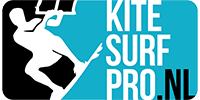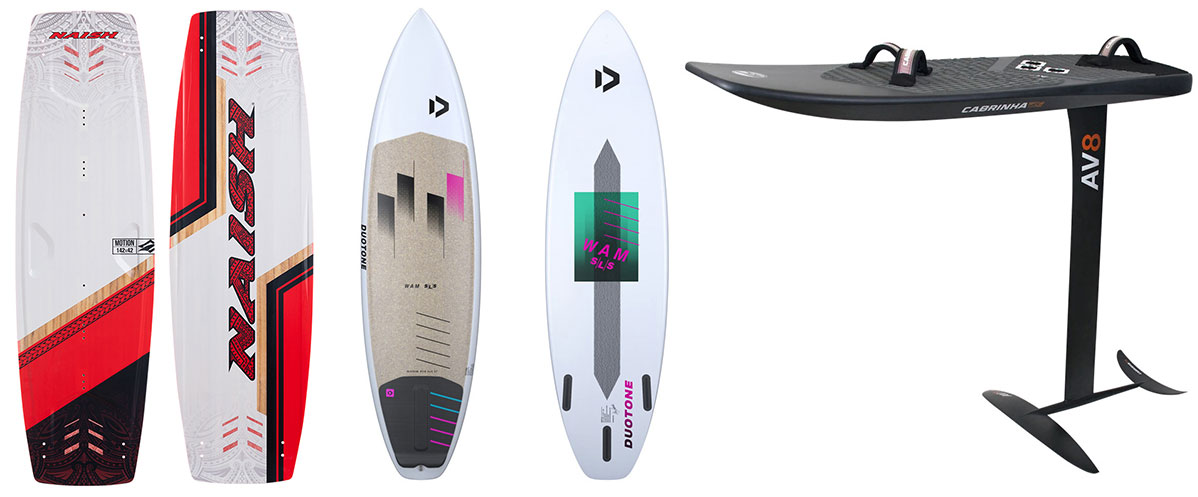Net like kites, kitesurf boards come in different shapes and sizes. After you kitesurfing lesson you will probably soon purchase your own kitesurfing set. Precisely because you want to get back on the water as soon as possible. In the beginning you preferably work together with a kite buddy. A kitesurf board should of course not be missing. But even if you are further along with kitesurfing, you want a kitesurf board that suits your level and your sailing style. Read the explanation kiteboards here.
3 types of kiteboards
1. Twin tip
2. Surf / Wave
3. Kite foil
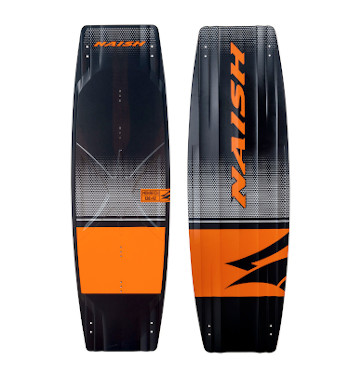
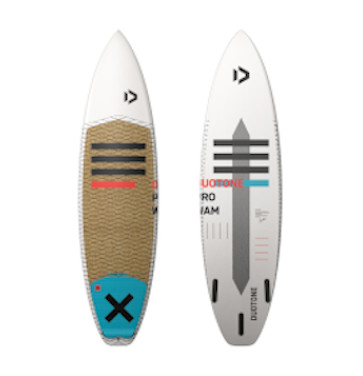
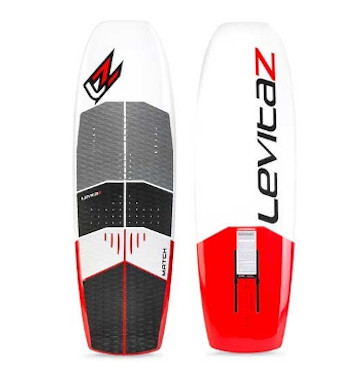
A board for every style
You now know which types of kiteboards there are. It's that simple. Now we are going to make it more challenging by giving you more information about the 3 types of kiteboards and the riding styles that can be linked to them. Kitesurfing is so cool because there are so many different ways to kite surf, also known as sailing styles. Sailing styles can also be combined and that is what makes kite surfing so diverse. For example, we see kite surfers who make mega high jumps on a hydrofoil kiteboard and get a huge kick out of it. Why not.
Sailing styles can even be combined and that is what makes kite surfing so diverse.
twin tip

Twintip kiteboards are by far the most used kite surf boards. As you can see, a twin tip kiteboard is a board that you can sail both to the left and to the right. You don't have to get off your foot straps if you want to change course. You don't have to turn a twin tip kiteboard if you want to change course. For example, a twin tip kiteboard offers a lot of convenience compared to surf / wave style kiteboards and also a lot of freedom.
Twintip type kiteboards are suitable for the following kitesurfing sailing styles:
- Freeride
- Freestyle
- Wakestyle
- Lightwind
Freeride - Twintip
This is the kite surfboard where kite surfing starts for the novice kite surfer. The freeride kitesurf riding style stands for a fun, uncomplicated kitesurfing session. The kite surfer does what he feels like at that moment. This can be anything: from cruising, kite surfing through the surf and trying to break some waves, jumping to doing cool tricks. The freeride kitesurf board is all made for this.
What size kiteboard do I need? Read it here.
Freestyle - Twintip
Depending on how often you go, ambition, perseverance and of course a bit of talent, you can switch to a freestyle kitesurf board for the more advanced kitesurfer. The freestyle kitesurfing style stands for popping: even higher jumps and staying in the air for a long time, performing tricks at pressure and speed (maybe even unhooked), kitelooping and so on. A freestyle kitesurf board looks the same to the eye as a freeride kitesurf board and you can of course also freeride with it, but a freestyle kiteboard kitesurfs more difficult than a freeride kitesurf board. For example, a freestyle kitesurf board is stiffer, less convex and straighter. This way you can put more pressure on the kiteboard to charge power for high jumps. A stiffer kiteboard does provide somewhat harder landings on the knees. Good foot pads with a thick foam layer can help cushion hard landings. View us kitesurf youtube channel once for some cool videos with different freestyle twintips.
Wakestyle - Twintip
Wakestyle kiteboard looks like twintip kiteboard. The biggest difference can be seen in the wakeboard bindings (shoes) instead of foot straps. Wakeboards are also convex and rounder, making them fast in turns, easy through waves in the surf and easier to go over obstacles. This style often also uses obstacles such as sliders and kickers to show tricks. This form of kite surfing is very similar to wakeboarding, hence the name. Wakestyle kite surfing is for the advanced kite surfer.
Surf / Wave

Surf / Wave kiteboards are on the rise. In the Netherlands too. Precisely because a surf / wave kiteboard really makes it possible to wave while kite surfing. This is not something with which you as a kitesurfer start your kitesurfing career after your kitesurfing lesson, but many kite surfers who have been kitesurfing and kite surfing at sea for a longer time do have a surf / wave kiteboard. It gives an extra dimension to kite surfing. Once tried, there is also a category of kite surfers who want nothing else. The surf / wave kiteboards are specially made to sail in one direction. If you want to turn around, you have to turn the board or jibe while kitesurfing. There are many different surf / wave kiteboards. For example, surf / wave kiteboards have been specially developed for smaller waves, for example in the surf. There are also surf / wave kiteboards specially developed for big waves. In addition, a category of surf / wave kiteboards has been specially developed for racing (flat, wide and with long fins).
Surf / Wave type kiteboards are suitable for the following kitesurfing styles:
- Wave (Large / Small)
- Freestyle surf
- Lightwind
We now continue with an explanation about hydrofoil kiteboards.
The foil is made so aerodynamic that it can let you kite surf from 7 knots above the water.
Hydrofoil

We have already shown you that light weather kite surfing can be done in different ways. Light weather kite surfing with a hydrofoil kiteboard and foil type kite is the best combination. But a hydrofoil kiteboard in combination with one light tube kite is also possible. We call this concept 'lite surf'.
A hydrofoil kiteboard with foil is so aerodynamic that it can let you kite surf from 7 knots above the water. The hydrofoil then lifts the kite surfer out of the water where, once on the kitefoiling, can be surfed very well against the wind.
Foil type kiteboards are suitable for the following kitesurfing sailing styles:
- Foil race (eg Formula Olympic Kitesurfing)
- Foil freeride
- Foil surf / wave
What size kiteboard do you need
Just like with kites, there are many different kiteboards. Each with its own details that suit the riding style of the kite surfer. After your kitesurfing lesson, you will probably soon purchase your own kitesurfing set. Precisely because you want to get back on the water as soon as possible. That is why we help you with insight so that you know what size kiteboard it suits you.
Little wind: twin tip surf / wave and hydrofoil
Kitesurfing in little wind is certainly possible. Technology is making enormous leaps in this area and because of this kite surfing an Olympic sport which will make its entrance in 2024. Closer to home you see that kite surfing with less wind has become increasingly popular. Kitesurfing can be done even at 8-16 knots (wind force 3-4). Right away super high performance foil kite and special hydrofoil kiteboard even from 5 to 6 knots. Investigated is that on 66% of the days it blows between 8-16 knots in the Netherlands. If you want to go for the most kitesurfing hours, we have three combinations written out for you.
With a super high performance foil kite and special hydrofoil kitesurf board can even be kitesurfed from 5 to 6 knots.
If we look at kiteboards with which you can kite surf with little wind, then you have 4 different kitesurf boards suitable:
- Normal twintips but big, wide and flat
- Special light weather twintips ('door')
- Special light weather wave surfboards
- Hydrofoil kitesurf boards
In light weather kite surfing it comes down to the buoyancy of the kiteboard so that you do not quickly sink into the water and quickly get up to speed.
In light weather kite surfing it comes down to the buoyancy of the kiteboard so that you do not quickly sink into the water and quickly get up to speed. In order to be able to kite surf with little wind, the choice of kiteboard cannot be viewed separately from the kite that is chosen. You have a lightly built one tube-kite or foil-kite when needed.
